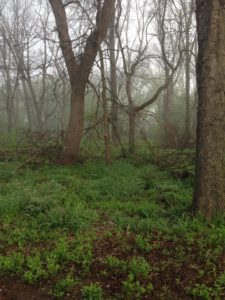Saving Our Children from Nature Deficit Disorder: Idea Four
Keep a Nature Journal (one square foot)
Observation is a key skill in science. Noting and tracking changes over time is one way we learn about the world around us.
When my son was a freshman in high school he was struggling with motivation and I was one of the original helicopter moms. I was determined he would be successful and did my best to monitor (read get him going and get sucked into doing part of ) his homework assignments.
He had a biology assignment that sounded interesting. He would identify one square foot of land somewhere in the great out of doors and graph it over the course of several weeks. He’d notice any changes and try to identify the causes of that change. He’d come to some conclusions about his tiny ecosystem and report them.
Geeky mom that I was, I grabbed the boy by the scruff of the collar and off we went to find a square foot of land equal to the assignment. We lived less than a mile from a beautiful and wild city park with miles of trails, little streams and a bit of wildlife. We (I) found a perfect bit of land near the entrance to the park.
We marked it out with string and he proceeded to graph all the grass, dirt, rocks and whatever else there was to see with the naked eye. We trekked back there daily and eagerly looked for any changes. Were there bugs making their way through the patch? Spiders making a tiny web? Had any leaves fallen on the patch? Moisture? What had changed?
I hate to admit it, but I really got into this project and sort of wished I was the student instead of the mom with the cattle prod. But even my “casual about the work” son got interested as we noted the minute changes in that one square foot over a number of days. Ants came and went, the weather left its marks and one tiny change influenced the entire square.
The climax of the entire project was the day we found a tire track across the whole piece. Man had invaded nature. The damage was done. A whole ecosystem bludgeoned to death in one turn of the steering wheel.
We frantically graphed and charted the damage and it was cataclysmic. I’m pretty sure my son doesn’t even remember this assignment, but I do. I loved that little plot. I was one step from naming the bugs Oscar and Sam. I was horrified by the damage the vehicle inflicted on my plot.
All of this to suggest that you might build some drama into your nature studies by encouraging your kids to keep a nature journal. You might select a certain tree to follow through the seasons, you might study a creek bank for several months. Do animals come and leave tracks? Do people litter the area? Are there bugs, snakes, worms, and other creatures in your selected space? How do they live together in the space? What encroachment by man do you notice?
Just as journals of our thoughts and emotions help us make sense of our internal world, careful observations and notations on the changes in nature inform us, lead us to new questions and help us understand the world around us.
All you need is an identifiable portion of nature, a clean notebook and a pencil. I think you’ll find that your children will learn to observe, question, predict and problem-solve in new ways when they focus their attention on a small space in nature.




 The Exploits of Edna and Gertie Join the fun, get your copy now!
The Exploits of Edna and Gertie Join the fun, get your copy now!